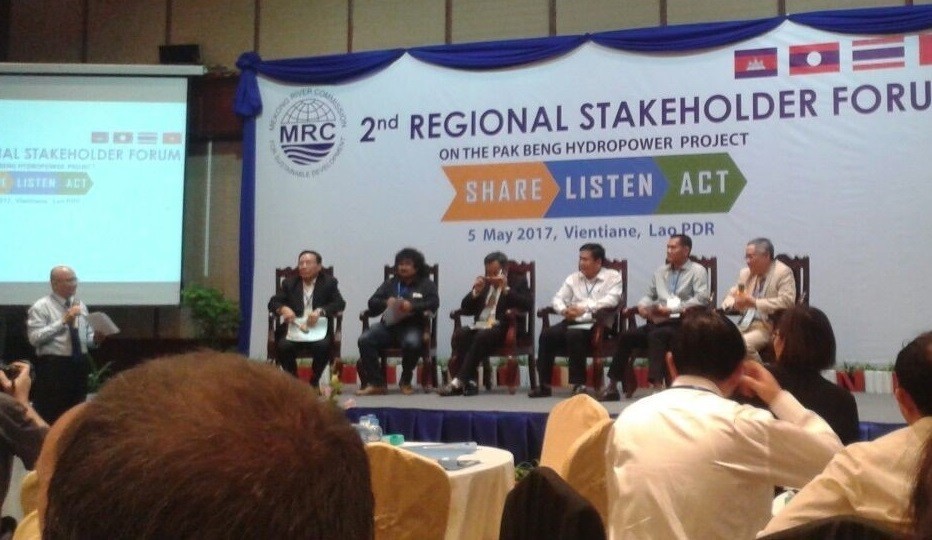Impressions from the 2nd Regional Stakeholder Forum on the Pak Beng dam
Last week, over 190 representatives from different interest groups including the Mekong River Commission’s (MRC) Secretariat, member countries, development partners, research institutes, media, private sector, and national and international NGOs attended the MRC’s 2nd regional stakeholder forum on the Pak Beng dam in Vientiane in the Lao People’s Democratic Republic (PDR).
The main emphasis of the meeting was to hear progress and responses on concerns raised in the 1st Regional Stakeholder Forum held in February 2017 and especially to learn more about the technical assessment findings from the MRC experts on various key topics including hydrology, navigation, water quality, fisheries and socio-economic issues of the planned Pak Beng dam.
The Regional Stakeholder meeting was the second forum this year as part of the Procedures for Notification, Prior Consultation and Agreement, or the PNPCA process, initiated by the MRC to allow the four member countries, the Lao PDR, Thailand, Vietnam and Cambodia to raise any concerns about the planned Pak Beng dam. The forum illustrates regional engagement in the basin, especially about dam planning. Dam construction is thriving in this region where hydropower is seen as a major source of income through revenues and as a source of renewable energy.
The Pak Beng dam will be the third mainstream dam in the Lower Mekong Basin after the Xayabouri and Don Sahong dams which are currently under construction in the Lao PDR. The Pak Beng dam will be located in northern Laos, in Oundomxay Province and has a planned capacity of 912 MW. The PNPCA process for the Pak Beng dam started at the end of 2016.
Adopted by the MRC in 2003, PNPCA includes three different processes that vary on the type of river, season and scope of use: notification, prior consultation and a specific agreement. To date, 53 projects have been submitted to the MRC and its PNPCA; 50 projects were notification cases and 3 projects prior consultation cases. The prior notification cases included the three proposed mainstream dams in the Lao PDR including the Xayaburi Dam, the Don Sahong Dam and the most recent submitted case, the Pak Beng Dam for which the PNPCA was initiated in December 2016.

Although no agreement was reached in the two previous PNPCA processes, as part of the PNPCA process around the Pak Beng dam, the subject of discussion at the 1st Regional stakeholder forum, the MRC has acknowledged some lessons learned. These include the importance of releasing all of the received documents to the public in a timely matter; arranging consultation times earlier in the PNPCA process; translating the necessary documents into the riparian languages; including the developers in the process; and ensuring that roles and expectations of the process are clear.
However, although many of these improvements have been made in recent years and helped to improve the PNPCA, the key challenge remains the implementation of the outcome of the PNPCA into a unanimous decision by the JC or the Council. As the current PNPCA process showcases so far, it is unlikely that an even improved PNPCA process for the Pak Beng dam will have a different outcome and most likely will result in the decision being put back to the national diplomatic channels. This will put even more pressure on an already questioned organization that is challenged by a restructuring process and reduced funding.
Although it cannot influence the outcome of the PNPCA process and the decision of the riparian members in the JC or the Council, the MRC Secretariat is held accountable for the problems and challenges associated with it.
This is an original commentary piece submitted to The Mekong Eye. It represents the analysis and opinions of the writer only. You may republish this under Creative Commons licensing.





